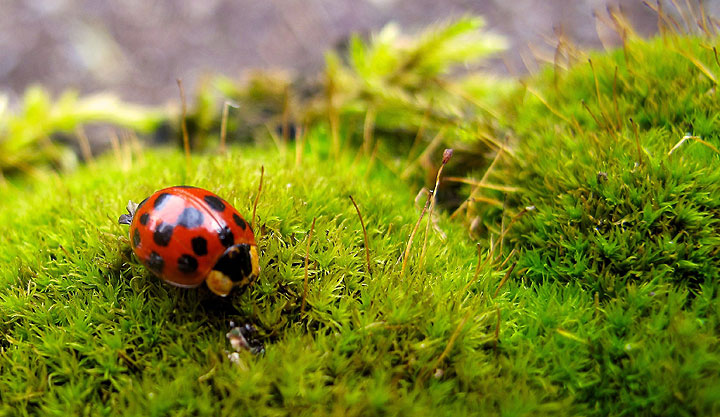Now that winter is here, scale insects have started showing up on my potted citrus tree and some orchids. How many other plant pests lurk, ready for a population explosion when conditions become ripe, typically in late winter?

Dowsing plants – especially indoor houseplants – with pesticides is bothersome and hazardous. Repeat applications usually are needed to catch each wave of the emerging pest population at its most susceptible stage. And it’s difficult to spray a plant thoroughly while keeping the mist off curtains, windows and furniture. A number of sprays can stain or even dissolve certain finishes or plastics.
A systemic pesticide such as Bonide Systemic Insecticide Granules, which spreads within the plant, also has shortcomings. It creates a toxic plant, which can poison any pet or child who nibbles a leaf. And, such materials can’t, of course, be used on an indoor citrus whose fruit you plan to eat.

Indoors, where rain and wind can’t carry away residues, you have to be wary even of pesticides labelled “natural.” Natural does not mean nontoxic. Rotenone, for example, is an all-natural pesticide extracted from a tropical plant, yet it is much more toxic than, say, malathion, a synthetic pesticide that also might be used on houseplants. I’m not suggesting using synthetic pesticides over natural ones on houseplants, but be aware of the hazards associated with any pesticide.
I try to avoid using pesticides altogether. They are just one approach to controlling pests, and should be the last one. Other approaches may demand greater intimacy with your pests, learning their habits and life cycles, but that’s part of what makes gardening interesting. Books such as The Gardener’s Guide to Common-Sense Pest Control by William and Helga Olkowski, and The Organic Gardener’s Handbook of Natural Pest and Disease Control, edited by Fern Marshall Bradley, Barbara W. Ellis and Deborah Martin, detail ways to control many houseplant pests.
For now, I’m dealing with scale insects by flicking any that I see off leaves with my thumbnail. I know I won’t eliminate them with this brute-force method, but I can at least keep the population in check. In a couple of months, they might get ahead of me, but by then perhaps the ladybugs that call my home their home will help out, as they have in years past.
I’ve used similar methods against aphids, crushing them where they congregate on leaves near the tips of stems, and against mealybugs, doing them in with a cotton swab dipped in alcohol. Keeping an aphid-infested plant in the shower will wash the pests away and create conditions inimical to another common pest, red spider mites, which are hard to see but make their presence known by imparting a bronze cast to leaves.
Trapping is a more elegant approach to pest control. Thwart aphids on single- or few-stemmed plants by blocking travel of the ants that herd and protect them: Wrap a sticky band around the stem or stems. Masking tape coated with sticky Tangle-Trap works and lasts for weeks. If clouds of whiteflies puff up whenever you brush against your geraniums, place yellow cards coated with oil or Tangle-Trap near the plants.
Good growing conditions also can help deter pests. Less frequent watering, for instance, is usually all that’s needed to deal with fungus gnats or sowbugs.
Yes, the occasional pest-ridden houseplant will need the last resort, a pesticide spray (or a walk to the compost pile, always an option). Even then, there are some effective and relatively nontoxic sprays, such as insecticidal soap, horticultural oil and Bt. By the time a spray is needed, the weather likely will have warmed enough that it can be done outdoors. Hold pests at bay long enough and you can move houseplants outdoors for their summer vacation, where pest problems frequently clear up by themselves.


Comments